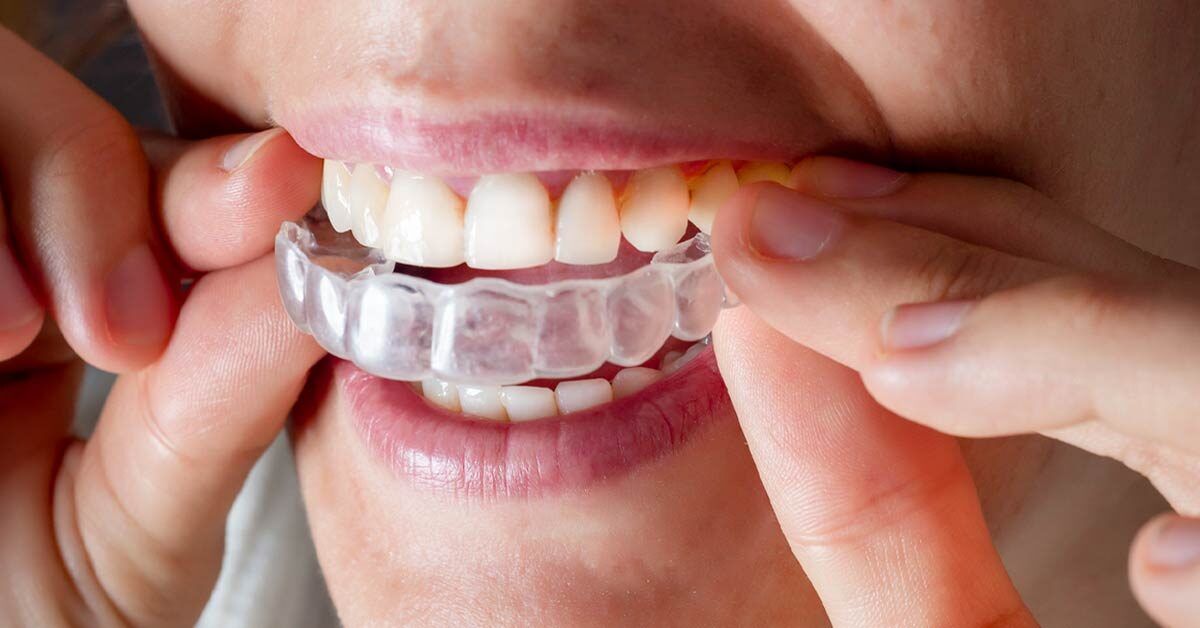What You Should Know About Invisalign Clear Aligners
Invisalign Cost Las Vegas clear aligners can subtly move your teeth if you want a straighter smile. They’re less conspicuous than standard braces and can work just as well, provided you wear the trays consistently.
But it’s important to understand this treatment’s benefits and pitfalls before committing to it.

When Invisalign first came out, it cost much more than traditional braces. But with time, technology, and better resources, the cost has leveled off to near that of regular orthodontic treatments. And for many patients, 0% interest financing options and auto-draft payment plans make the treatment even more affordable.
The biggest factor in the overall cost of Invisalign is how long the treatment takes. The duration of the treatment depends on how severe your misalignment was to begin with, as well as how diligently you wear the aligners (as well as other factors). On average, treatment lasts 12 to 18 months, but it can be shorter or longer than that depending on individual needs and your lifestyle.
During your consultation at Swish Dental, our doctors will evaluate your teeth and determine if Invisalign is the right fit for you. If you do decide to move forward with the treatment, our team will take 3D digital impressions of your teeth that are then sent to a lab where precision trays are created for you. After your initial consultation, you will be able to schedule follow-up appointments to receive new trays as needed throughout the course of your treatment.
Invisalign is not only a great option for cosmetic dentistry, but it can also help to correct more serious issues like crooked teeth, an overbite or underbite, and other bite conditions. Invisalign is one of the best orthodontic treatments available, and the results can last for years if you continue to take care of your smile.
There are some clear aligner alternatives that claim to be less expensive than Invisalign, but the quality of the treatment isn’t nearly as good. In fact, some of these “mail-in” systems may set you up for complications because they do not have a dentist supervise the process. If you are interested in reducing the cost of your Invisalign treatment, talk to your orthodontist about payment plan options. Most offices will be able to work with you on a payment plan that works within your budget. Invisalign is a worthwhile investment for your oral health, your confidence, and your overall quality of life.
The amount of time it takes for a person to get their desired Invisalign results will vary. The treatment timeline will depend on the severity of a patient’s dental issues and their level of cooperation with their orthodontist. For instance, closing a minor gap between two upper front teeth is much easier than shifting an overbite that has been developing over the years to minimize tooth enamel wear and tear.
Patients who consistently change their trays as instructed by their dentist or orthodontist will speed up the process and see more pronounced results. In contrast, patients who miss changing their trays or don’t wear them for the recommended 22 hours a day will experience delays.
Depending on the complexity of a patient’s dental issues, they may also need to visit their orthodontist more frequently. This is a crucial part of the Invisalign process and can help ensure that the patients’ teeth are moving as they should. If a patient’s dentist notices that their teeth aren’t moving as they should, they will use extra tools to encourage them to move into their desired positions.
The Invisalign treatment process can be quite painful, especially when a new set of trays is first introduced to the teeth. However, this pain will gradually subside as the teeth begin to shift into their desired position. In addition, patients are advised to brush their teeth and floss regularly during the Invisalign process. This will prevent food from sticking to the teeth and prevent plaque buildup that can cause gum irritation.
Invisalign trays are custom-fabricated based on digital impressions taken of a patient’s teeth using a dental scanner like the iTero. Each new tray is designed to move the teeth slightly differently, and these movements collectively move them into their final positions. Occasionally, an orthodontist might make an error when making the trays and this can delay the patient’s treatment timeline.
Once the treatment has been completed, patients will be provided with retainers to keep their smiles aligned and prevent relapse. Alternatively, some dentists may recommend using other orthodontic devices such as headgear to assist with the movement of the teeth.
Unlike the brackets and wires of traditional braces, which can poke or scratch the inside of your mouth, Invisalign clear aligners are smooth, plastic, and irritation-free. They also fit snugly against your teeth and don’t interfere with your normal speech patterns. However, that does not mean that clear aligners are pain-free. They can cause discomfort if you are not wearing them correctly or if you don’t stick with your treatment plan.
It’s important to wear your Invisalign trays 20 to 22 hours each day and only remove them to eat, drink, brush, and floss. If you take them out too much, your teeth won’t get consistent pressure and they won’t straighten as quickly. Also, be sure to rinse your trays with warm water to prevent bacteria buildup. You may also want to use a soft-bristled toothbrush and mild anti-bacterial soap to clean your trays.
The first 2 to 3 days of wearing new aligners are usually the most uncomfortable. This is because your teeth are undergoing significant pressure to move, and your muscles may be acclimating to this. However, after a few days, the pain should subside. If the pain persists, consult your orthodontist about it.
Invisalign can also be a little rough on your gums, as it causes what doctors call “xerostomia.” This is caused by the constant rubbing of an alien retainer against your gums. This rubbing can cause your gums to redden, swell, and bleed, which isn’t ideal.
During the Invisalign process, you’ll have to visit your orthodontist about every six weeks for a checkup and to receive new trays. This isn’t as often as visiting the dentist for regular cleanings, but it’s necessary to ensure that your treatment is on track and that you’re getting the results that you want. Fortunately, these appointments are fast and easy, as dentists can see how your teeth are progressing with the help of an intraoral camera. This is also an opportunity for patients to ask their orthodontist any questions that they might have. The dentist can then make any adjustments as needed, ensuring that the patient is on track to get the results they want.
Invisalign enables patients to eat all of their favorite foods as long as they take the trays out before eating and clean their teeth thoroughly. This is important because small food particles can get stuck between the teeth and gum when wearing Invisalign, which can lead to tooth decay if not removed quickly enough. The best way to eliminate these food particles is by brushing and flossing before putting the aligners back in, but many people find that this is not always possible. Invisalign patients should try to eat only soft foods and drink water at meals, as this will help reduce the amount of food residue that remains on their teeth and in their aligners.
In addition to avoiding sticky foods like caramels and chewing gum, patients with Invisalign should also avoid acidic drinks and hard foods, which can damage the teeth and hinder the treatment. These foods can cause cracks and fractures, which may require additional dental work or even affect the alignment of the teeth. Patients with Invisalign should also drink plenty of water, as this will wash away food particles and help prevent the formation of bacteria, which can lead to bad breath and tooth decay.
For those with a sweet tooth, there are still many desserts that can be enjoyed while wearing Invisalign, such as fresh fruit, yogurt, mashed potatoes, and soft cheeses. However, patients should be aware that these foods can stain the clear aligners if they are not cleaned well enough. It is also recommended to rinse with water or use a sugar-free mouthwash after each meal to minimize the risk of staining.
While the removal of Invisalign trays makes it easier to eat any type of food, patients should be mindful of what they eat and how often. Sticky and sugary foods should be avoided as they can trap food residue on the teeth, which can cause cavities and gum disease. Additionally, hard foods can damage the teeth and gums and hinder the progress of the Invisalign treatment. If you have questions about your eating habits while wearing Invisalign, our team will be happy to help!





